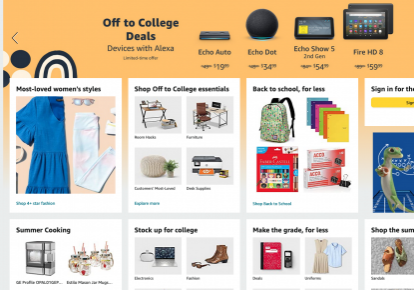
The answer is, it depends. The rates determining what Amazon ads cost are influenced by several different factors. In 2019, we reported on metrics for the amounts and results for the average Amazon vendor. This includes how you are charged, and how you can be smart about getting maximum conversions from your ad spend.
We’ve updated that report here with current figures for 2020-21, and included the old figures so you can compare how costs are trending.
It’s good news for vendors: costs have actually gone down over the past two years. Advertisers are spending less on average, while performance remains fairly level.
Amazon ads cost by the numbers
What does an average long-time seller on Amazon pay, and what kind of results do they see?
Average Cost per Click (CPC): $.71
Down from $.97 in 2019
Your cost-per-click (CPC) is what it costs you when a customer clicks your ad. Remember that Amazon CPC is auction-based, so the price you end up paying is only a penny higher than the next bidder. If you can beat this average, you’re golden.
Average Daily Spend: $268.71
Down from $381.48 in 2019
This is what an average, high-volume seller spends on Amazon advertising on a daily basis. Daily spend can be measured in different ways such as base keyword cost or by ad groups, depending on which insights you’re seeking.
Average Daily Conversions: 35
Down from 36.6 in 2019
Average Advertising Cost of Sales (ACOS): 27.6%
Down from 34% in 2019
ACOS is the figure you get by dividing total advertising costs by total sales.
Source: Advertising Badger
If you’re just starting out with Amazon ads…
If you are new to Amazon advertising and preparing to launch your first campaign, it can be a bit confusing trying to figure out where to start with your budget. Ads are on an auction system based on bidding “up to” certain amounts for certain keywords.
Premium Ads are those fixed or rotating banner displays that appear at the top of your main Amazon home page. To get into this rotation costs tens of thousands per day. That’s probably not a category you’re interested in, so we will skip that category.
Rather than setting a fixed monthly budget for PPC, many sellers prefer to adjust their level of spend as they go, figuring out optimization strategies along the way. The majority will start up their sponsored product campaign budgeting for about $30 per day.
Sponsored Product ads are the most popular. They might be seen anywhere on the page, but usually at the top. They’ll always carry a small label that says either “Sponsored” or “Ad.”
Sponsored Brand ads allow brands to promote three or more products in a single ad in headline banners.
The role of keywords
Every kind of ad is based on targeted keywords.
There are two options when it comes to choosing keywords: automatic or manual targeting.
Automatic targeting is content-driven, based on the product descriptions you use. Amazon uses that information for matching your ads with relevant search terms.
Manual targeting, lets you use keywords you’ve chosen yourself. Most sellers like this option because it delivers better results for them.
How most keywords actually perform
Teikametrics analyzed all of their clients’ keyword and associated performance data during a 4-month period in 2019 involving 6.5 million keywords and thousands of advertisers.
The Keyword Trap
They found that about 60% of all keywords got no clicks at all over the four-month period. 97% received less than one daily click.
It took an average of at least three clicks per day for a keyword to generate revenue more than what it cost to place an ad.
The lesson to be learned here is that just throwing a bunch of keywords into the product’s hidden keywords on Amazon won’t result in striking gold. It requires tracking the performance on a regular basis, and re-allocating your ad dollars to the best performers–which may change over time.
A strategy to minimize your ACOS
When it comes to ACOS, you have to regularly check the analytics to see how your ads are performing.
Don’t waste time with product ads that are drawing fewer than 0.1 clicks per day. This will allow you to focus your budget and time towards keywords that are driving meaningful sales.
If you’re a seller using Sponsored Products and Sponsored Brands ads in those markets, know that competition can be intense. So be prepared to bid efficiently in order to minimize your ACOS rate.
If you have a thorough understanding of which search terms to target, both from a volume and margin perspective, you’ll succeed. Remember not to fall into the Keyword Trap.
Once you have enough data to make an informed decision, you may want to trim down the list of terms you are targeting against, and reallocate budget and adjust bids towards that smaller, higher volume subset, especially during high-traffic periods like Q4.
Shoppingfeed has been connecting e-merchants to Amazon since the beginning. To maximize the value of your ad spend, we optimize product listings with error-free results. Our software search optimizes product listings on all of the world’s most powerful marketplaces, syncs and refines inventory data, and eases fulfillment with automated workflows.




